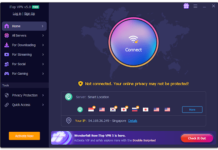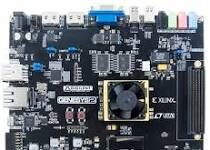In the storm of digital innovation surrounding the near-weekly releases of fantastic new digital tech, cybersecurity has come to the fore. What this has pushed to the back of the mind is physical security, which may actually have a huge role to play in digital security planning. In early February, the UK’s Computer Business Review reported that imposter staff were using sophisticated technology to breach systems at employers around the United Kingdom. Bringing into focus the interface between physical and digital security, these incidents show just why a holistic approach is needed.
Modern surveillance
The physical/cyber security interaction is best shown through modern surveillance. CCTV and similar systems have gone from being the hallmark of companies able to afford expensively wired systems, or local government, and are now commonplace even in the home – the WaPo note how smart doorbells are being used to solve crime. This approach, where digital technology is intrinsically used for the monitoring and assessment of physical risk, is one used by industry experts DSC. They advocate the use of intrusion control paired up with high-tech security solutions, including high-level communications tech.
Also read: How to Start Your Career in Cyber Security
The role of communications
That focus on communication is another key part of managing physical security through digital means. A significant part of this is through new interconnected communication tech, and it’s in the automotive sector that this has been most highlighted. In mid February, researchers from internet security giants McAfee tricked a self-driving Tesla vehicle into accelerating to dangerous speeds by the simple application of a piece of tape on a road sign, according to the MIT Tech Review. This subtle change affected the on-board driving camera in the Tesla vehicle. Solving this problem has been mooted as being a challenge for communication. Essentially, having secure networks with protected communication will enhance the physical security of an object – whether a car, business or person.
Also read: Common Cyber security Mistakes
Focusing on physical systems
The early 2010s saw up to 20% of Iran’s nuclear production capability be reduced to nothing by malware. The bug in question, StuxNet, set the scene for multiple other cyber-to-physical attacks. According to ABC Australia, the bug then went out of control and has seen applications outside of those targeting states and nations. With many of these bugs playing on the vulnerabilities of outdated systems and technology, it’s important to try to future-proof your own systems. This goes from updating the software you use and ensuring you have the right suites down to the physical infrastructure of your systems: cabling, servers, the quality of your computer hardware and so on. Don’t assume that software will be able to do all of the work for you, and put some resilience factors into the foundation of your systems.
Physical security is being impacted by digital factors in ways like never before; the impact that actions in the cyber sphere can have on physical security are more expansive than ever. It’s therefore crucial that physical security is not eschewed in favor of a heavily cyber-focused approach. The two realms of security go hand in hand, and an all-round approach will create the best outcome for businesses and individuals.
Also read: How an It Support Company Can Help Secure Your Customer’s Data?











